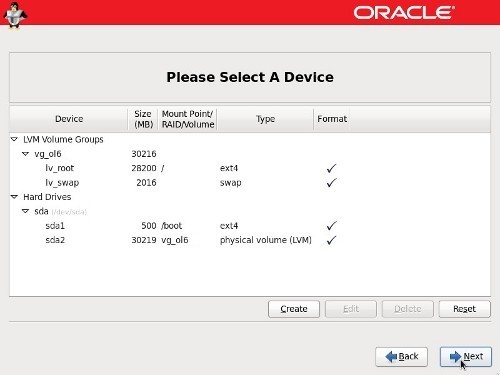Hi,
You can format and mount any disk which is attached a new disk to the server.

You can partition /dev/sdb disk with fdisk tool like below.
[root@deveci ~]# fdisk /dev/sdb
Device contains neither a valid DOS partition table, nor Sun, SGI or OSF disklabel
Building a new DOS disklabel with disk identifier 0x786292ec.
Changes will remain in memory only, until you decide to write them.
After that, of course, the previous content won't be recoverable.
Warning: invalid flag 0x0000 of partition table 4 will be corrected by w(rite)
WARNING: DOS-compatible mode is deprecated. It's strongly recommended to
switch off the mode (command 'c') and change display units to
sectors (command 'u').
Command (m for help): n
Command action
e extended
p primary partition (1-4)
p
Partition number (1-4): 1
First cylinder (1-1305, default 1):
Using default value 1
Last cylinder, +cylinders or +size{K,M,G} (1-1305, default 1305):
Using default value 1305
Command (m for help): w
The partition table has been altered!
Calling ioctl() to re-read partition table.
Syncing disks.
[root@deveci ~]#
You can format partitioned disk ( ext4 type ) like below
[root@deveci-1 ~]# [root@deveci-1 ~]# mkfs -t ext4 /dev/sdb1 mke2fs 1.41.12 (17-May-2010) /dev/sdc is entire device, not just one partition! Proceed anyway? (y,n) y Filesystem label= OS type: Linux Block size=4096 (log=2) Fragment size=4096 (log=2) Stride=0 blocks, Stripe width=0 blocks 65536 inodes, 262144 blocks 13107 blocks (5.00%) reserved for the super user First data block=0 Maximum filesystem blocks=268435456 8 block groups 32768 blocks per group, 32768 fragments per group 8192 inodes per group Superblock backups stored on blocks: 32768, 98304, 163840, 229376 Writing inode tables: done Creating journal (8192 blocks): done Writing superblocks and filesystem accounting information: done This filesystem will be automatically checked every 29 mounts or 180 days, whichever comes first. Use tune2fs -c or -i to override. [root@deveci-1 ~]#
You can create related directory and mount this volume group with this directory.
[root@deveci-1 /]# mkdir /oracle
[root@deveci-1 /]# mount -t ext4 /dev/sdb1 /oracle
[root@deveci-1 /]#
[root@deveci-1 /]#
[root@deveci-1 /]# df -h
Filesystem Size Used Avail Use% Mounted on
/dev/mapper/vg_ora12c-lv_root
46G 24G 19G 56% /
tmpfs 1.7G 779M 940M 46% /dev/shm
/dev/sda1 485M 76M 384M 17% /boot
/dev/sdc 1008M 34M 924M 4% /oracle
[root@deveci-1 /]#
Do you want to learn Linux System Administration for Beginners, then read the following articles.
https://ittutorial.org/linux-administration-tutorial-for-beginners/
 IT Tutorial IT Tutorial | Oracle DBA | SQL Server, Goldengate, Exadata, Big Data, Data ScienceTutorial
IT Tutorial IT Tutorial | Oracle DBA | SQL Server, Goldengate, Exadata, Big Data, Data ScienceTutorial